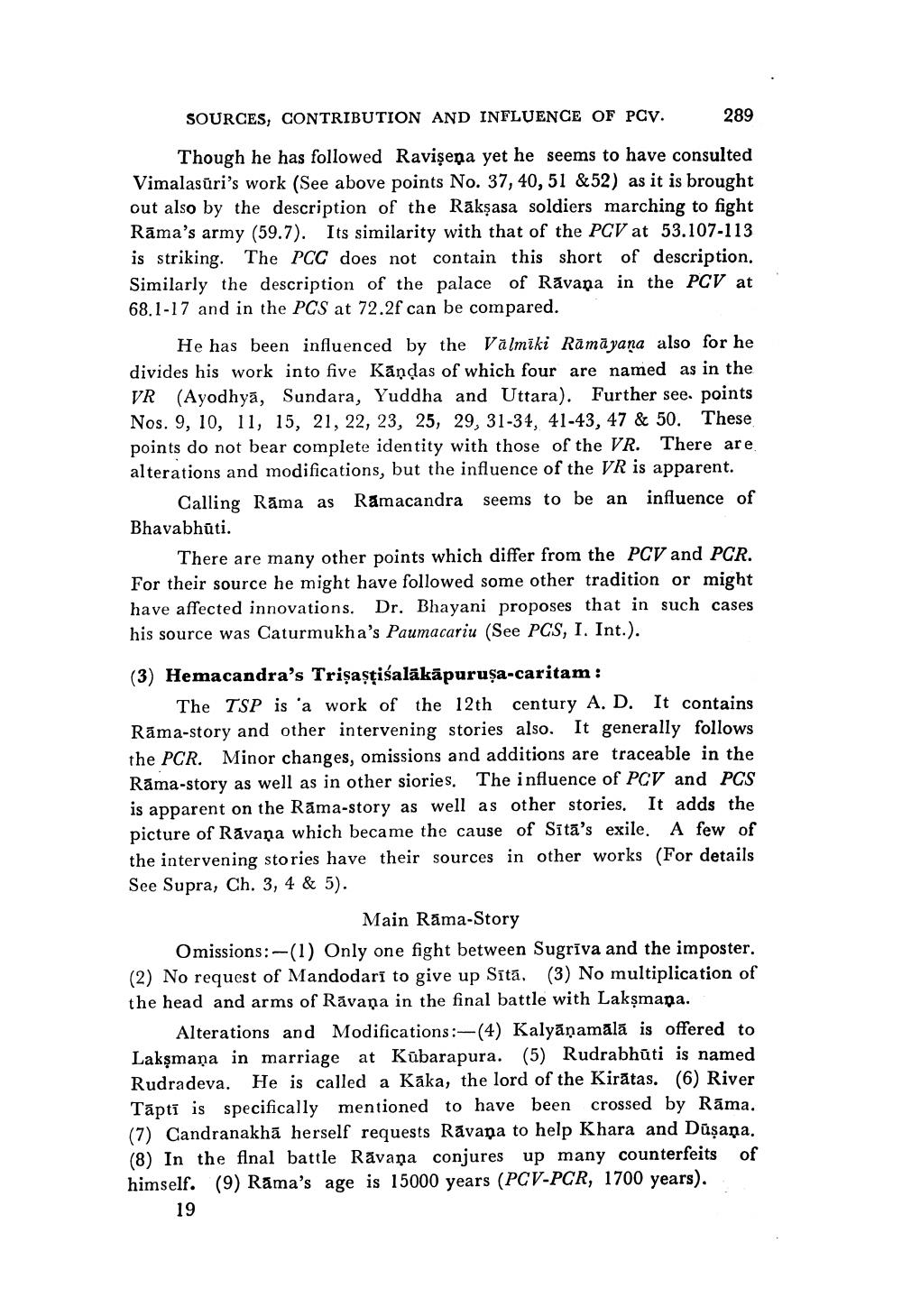________________
SOURCES, CONTRIBUTION AND INFLUENCE OF PCy. 289
Though he has followed Ravişeņa yet he seems to have consulted Vimalasüri's work (See above points No. 37, 40,51 &52) as it is brought out also by the description of the Raksasa soldiers marching to fight Rāma's army (59.7). Its similarity with that of the PCV at 53.107-113 is striking. The PCC does not contain this short of description. Similarly the description of the palace of Rāvana in the PCV at 68.1-17 and in the PCS at 72.2f can be compared.
He has been influenced by the Valmiki Rāmāyana also for he divides his work into five Kāndas of which four are named as in the VR (Ayodhyā, Sundara, Yuddha and Uttara). Further see. points Nos. 9, 10, 11, 15, 21, 22, 23, 25, 29, 31-34, 41-43, 47 & 50. These points do not bear complete identity with those of the VR. There are alterations and modifications, but the influence of the VR is apparent.
Calling Rāma as Ramacandra seems to be an influence of Bhavabhūti.
There are many other points which differ from the PCV and PCR. For their source he might have followed some other tradition or might have affected innovations. Dr. Bhayani proposes that in such cases his source was Caturmukha's Paumacariu (See PCS, I. Int.).
(3) Hemacandra's Trişașțiśalākāpurușa-caritam:
The TSP is a work of the 12th century A. D. It contains Rāma-story and other intervening stories also. It generally follows the PCR. Minor changes, omissions and additions are traceable in the Rāma-story as well as in other siories. The influence of PCV and PCS is apparent on the Rāma-story as well as other stories. It adds the picture of Rāvana which became the cause of Sītā's exile. A few of the intervening stories have their sources in other works (For details See Supra, Ch. 3, 4 & 5).
Main Rama-Story Omissions:-(1) Only one fight between Sugrīva and the imposter. (2) No request of Mandodarī to give up Sītā. (3) No multiplication of the head and arms of Rāvana in the final battle with Lakşmapa.
Alterations and Modifications:-(4) Kalyāṇamālā is offered to Lakşmaņa in marriage at Kūbarapura. (5) Rudrabhūti is named Rudradeva. He is called a Kāka, the lord of the Kirātas. (6) River Tāpti is specifically mentioned to have been crossed by Rāma. (7) Candranakhā herself requests Rāvana to help Khara and Düşana. (8) In the final battle Rāvana conjures up many counterfeits of himself. (9) Rāma's age is 15000 years (PCV-PCR, 1700 years).
19




